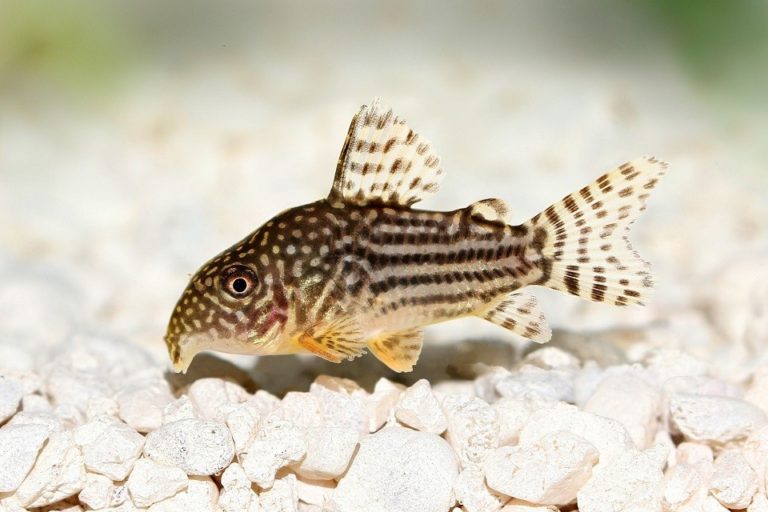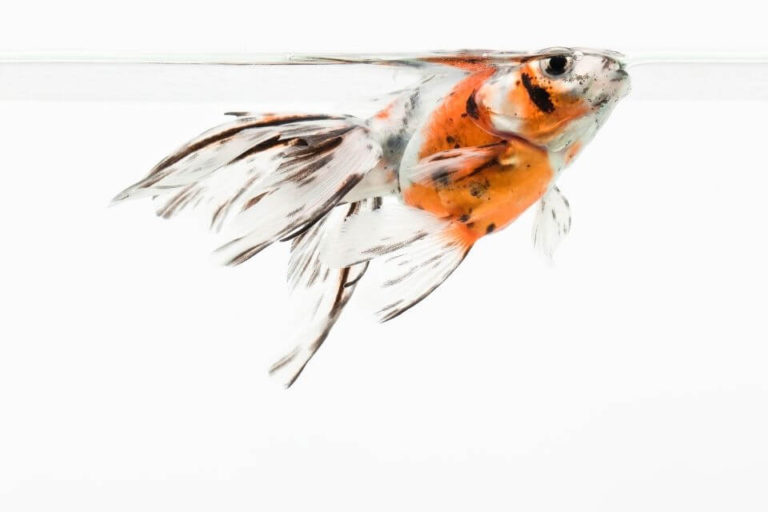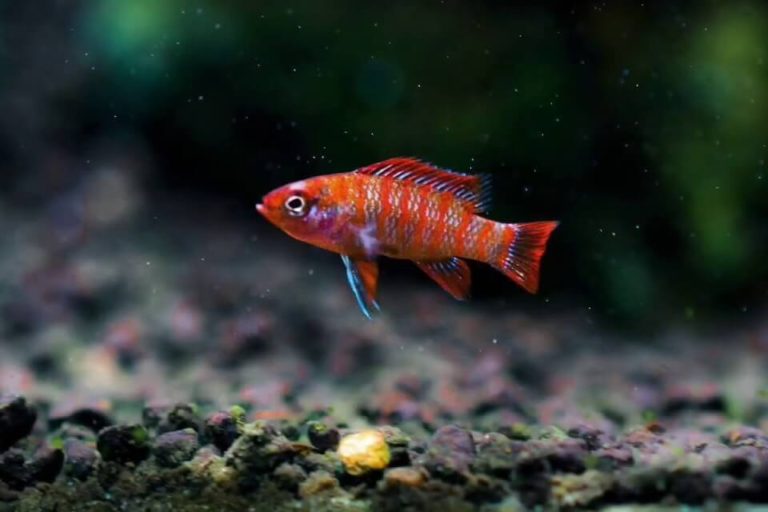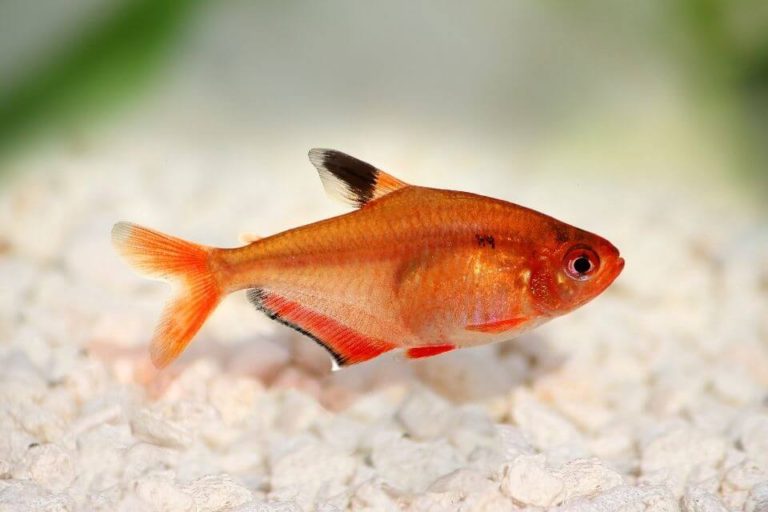Zebra Danio Care & Species Profile – Size, Lifespan, Food and Tankmates
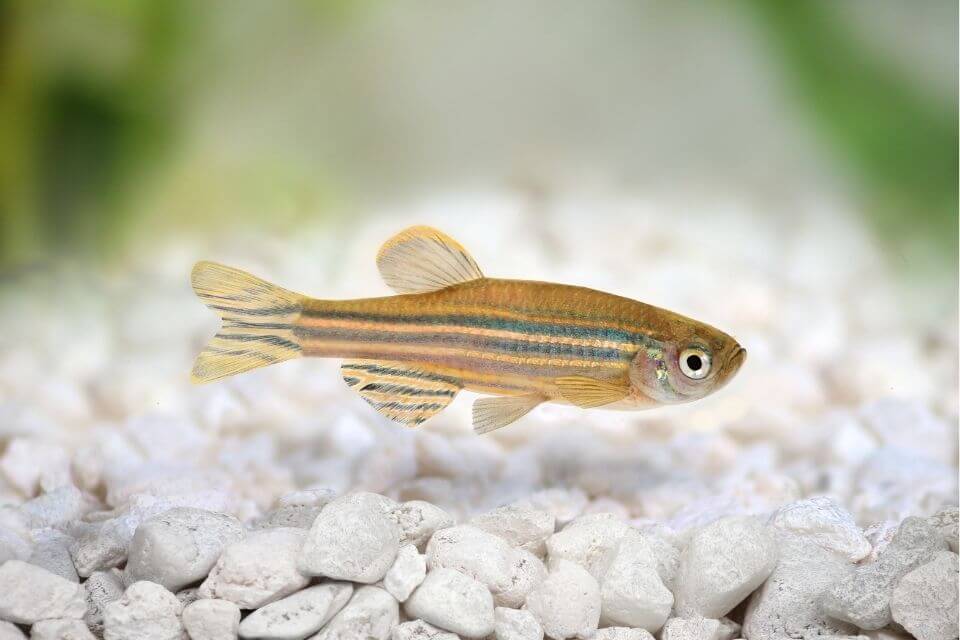
Zebra Danio is a freshwater fish species known to be famous among aquarists since they are relatively easy to care for. Also known as Zebrafish or Striped Danio while it is s scientifically known as “Danio rerio“.
The Zebrafish is relatively small in size and an excellent freshwater fish among the newbie aquarists due to its unique characteristics. These fish have been selectively bred and are genetically modified in order to change their appearance.
To better understand how to raise your Zebrafish, consider adhering to the tips discussed in this article.
In addition, thanks to our research along with the experience of raising, we have compiled a comprehensive care guide for Zebra Danio that is ideal for use among both experienced and newbie aquarists.
| Quick Facts: | |
|---|---|
| Common Names : | Zebra Danio, Zebrafish, Striped Danio |
| Origin : | Pakistan to Myanmar |
| Family : | Cyprinidae |
| Scientific Name : | Danio rerio |
| Care Level : | Easy |
| Temperament : | Peaceful |
| Social : | Community friendly |
| Diet : | Omnivores |
| Size (average) : | Up to 2.5 inches |
| Lifespan : | Up to 5 years |
| Breeding : | Egg layer |
| Minimum Tank Size: | 10 gallons |
| Tank Environment : | Freshwater, gravel or fine sand substrate, Tall aquarium plants, rocks, caves, and driftwood. Medium lighting |
| Temperature : | 64 - 77 °F (18 – 25 °C) |
| Water Hardness : | 8 – 12 dGH |
| Water pH Level : | 6.0 - 8.0 |
Species Overview
The Zebra Danio belongs to the species of Cyprinidae family and is known to be very easy to take care of. Furthermore, it is undoubtedly the most common fish in an aquarium for a good reason.
From being an enjoyable freshwater fish to a social and peaceful fish, Zebra Danio is the most recommended fish in an aquarium, especially for a beginner.
Even this fish is relatively small in size and is very eye-catching making it hard to miss in a fish tank.
They have been in captivity for an extended period, thanks to their high adaptability and playful nature. This means that taking care of a shoal of Zebra Danios is pretty much straightforward.
Zebra Danio Size
The Zebra Danio size can grow up to 2.5 inches in length. Although 2.5 inches is their maximum length, there are reports of Zebra Danio that have grown up to 3 inches long.
However, they have to be kept in ponds and not in an outdoor aquarium to achieve that. Usually, this is a result of a larger amount of space along with natural food available in ponds as opposed to aquariums.
Zebra Danio Lifespan
The average Zebra Danio lifespan is around 2 to 5 years. However, there are always no guarantees when it comes to lifespan. The life expectancy of a Zebrafish will depend on how you take good care of it, just like any other pet.
A Zebrafish living in a pristine environment being fed a top-notch diet are likely to reach the 5 years mark. On the other hand, when kept in a poorly maintained aquarium with a high risk of diseases, they are likely to have a premature death.
Appearance And Colors
It is relatively easy to spot a Zebra Danio, thanks to its distinctive horizontal stripes. These fish feature blue-purple horizontal stripes that run from their gills to the tail.
This appearance aids in setting a slim and compressed silver-gold body, giving it a very attractive look.
The Zebra Danio is known to have a different appearance from golden to vail-tailed Zebra Danio, Albino Zebra Danio, and long-finned Zebra Danio. It is also common in some popular Leopard varieties.
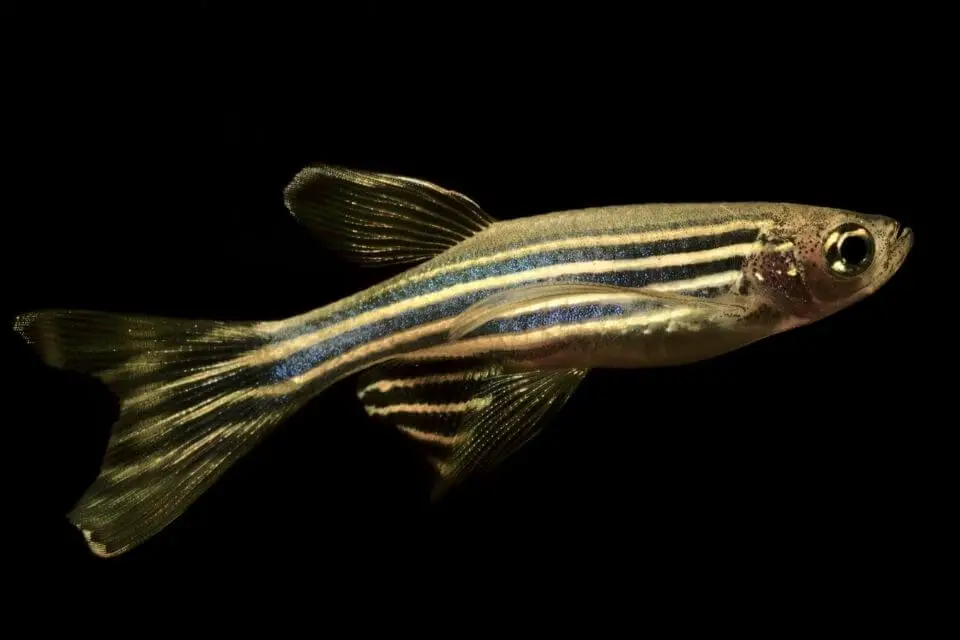
Zebra Danio with a Leopard strain incorporates black spots that sprinkle on their body. They were first considered a different species; however, a genetic study has shown that they are just a spotted variation of the Zebra Danio.
Behavior & Temperament
Zebra Danio is known to exhibit shoaling behavior and is a relatively social species when it comes to behavior and temperament.
The shoaling behavior tends to have a hierarchical dominance system established through playful and non-aggressive behavior. These fish are known to be social and peaceful and are often seen chasing and playing with each other in an aquarium.
However, they are known to display an aggressive character towards a long-finned and slow-moving species, and they can be seen nipping their fins.
Furthermore, since these fish are shoaling as well as community fish, they do not perform well when kept alone. They often undergo stresses that can lead to illness when kept alone in a fish tank.
This can also lead them to become less active, forcing them to spend most of their time in a hidden environment.
When you keep them in a community, you will see a significant change in their behavior which causes them to become hyperactive. They occupy all levels of an aquarium; however, they predominantly occupy the upper layer of an aquarium.
Zebra Danio Care
As stated earlier in this guide, taking care of a Zebrafish is relatively easy due to their incredibly adaptable nature. They are known to adjust to almost any environment they are kept in, making it not only easy but the best beginner-friendly fish for aquarists.
With that in mind, you need to note that they also have their limits. Just like any other fish, Zebrafish have specific needs and preferences.
For your Zebrafish to live a healthy life, you will need to give it top-notch care, and to help with that, consider reading the useful tips that we discuss in this Zebra Danio care guide.
– Zebra Danio Tank Size
First and foremost, you will be required to choose the correct tank size. Fortunately, Zebra Danio is known to be relatively small in size, and they do not need a big tank to thrive.
Therefore, the minimum tank size for a Zebra Danio should be 10 gallons. And as always, the bigger, the better.
A 10-gallon aquarium is sufficient for supporting a relatively small group of Zebra Danio fish. Therefore, if you would like to put them in a significantly large community, you should have a bigger aquarium to provide ample space to live.
– Zebra Danio Tank Setup
Like tank size, the Zebra Danio tank setup is equally important; it is the area where you will have a wiggle room. Zebra Danio loves a well-decorated aquarium full of items that appear natural.
Since they are playful, Zebrafish often spend most of their time exploring their habitat. When it comes to tank setup, you will need to start with placing your substrate.
Consider using gravel or fine sand since these fish do not spend most of their time at the bottom of the tank.
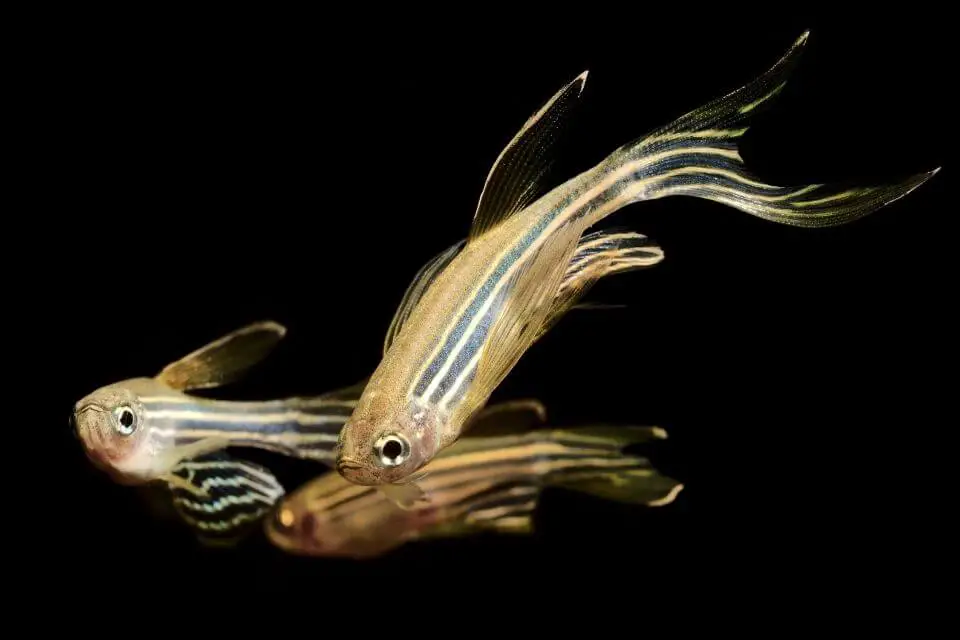
Although they might visit the tank’s bottom, they are not susceptible to substrate-related injuries, which is common among most fish.
For decorations, consider using dark-colored décors. With darker coloration in place, the patterns on your Zebrafish will pop. You might consider decorating your tank with plants, fake houses, logs, and rocks.
However, ensure that the middle of your aquarium is open to allow them to swim better. We cannot overemphasize the need for a filtration system in your aquarium. With it in place, it will aid in improving water quality in the tank.
Although the type of filter you will use will highly depend on your preference, always consider one that will best suit your tank’s needs. In addition, you might as well consider installing a lighting system to give your aquarium an improved look.
– Water Conditions And Parameters
For water conditions and parameters, Zebra Danio is known to perform well in an array of temperatures from 64 to 77 degrees Fahrenheit as long as it is kept constant with relatively slow changes.
An aquatic heater can be useful; however, you might not require one for a Striped Danio if your aquarium temperature does not fluctuate that much.
In addition to that, Zebra Danio is not sensitive to water hardness. However, the water hardness level should be between 8 to 12 dGH. When it comes to pH, Zebra Danio prefers a pH of 6 to 8.
– Suitable Plants
Some of the suitable plants for use in a Zebra Danio’s tank include;
- Amazon Sword
- Anacharis
- Java Fern
- Hornwort
- Java Moss
However, you should try to avoid using Floating Aquarium Plants with Zebra Danios.
Possible Diseases And Prevention
Zebra Danios are predisposed to all diseases that freshwater fish suffer from. Therefore, as a Zebrafish owner, you will need to watch out for fungal infections Ich, and parasitic infections, to name a few.
Additionally, these fish are susceptible to many lesser-known health conditions, with Mycobacteriosis being the most common among them.
Caused by non-motile bacteria, Mycobacteriosis can spread quickly throughout your aquarium, and it is known to cause an array of symptoms in Zebra Danio.
They often experience inflammation, ulcers, fins, and skin loss when suffering from Mycobacteriosis. Unfortunately, treating this condition is relatively challenging.
And as a result, the best action to take is to remove the infected fish and remove the bacteria by carrying out a water change in your aquarium. Unfortunately, even then, your fish will not have a good prognosis.
In addition to Mycobacteriosis, Nematode is also a common infection among Zebra Danio. These parasites are known to cause physical changes in Zebrafish, making them look darker than usual.
Furthermore, they will make your fish appear lethargic hence leading to severe weight loss. All these health conditions are a result of poor living conditions.
Therefore, to protect your fish against such infections, it is recommended to assess their living environment and ensure healthy and stress-free constantly.
Moreover, you should consider carrying out water changes more often and ensure that the filtration system is in good working condition.
Diet And Feeding
The best thing about having Zebra Danio is that they are not picky when it comes to food. They are omnivorous in nature, meaning they will feed on any type of food they come across while living in the wild.
These fish are known to feed on small insects and plant detritus. Like in the wild, Zebrafish in captivity have an equally flexible diet. To meet their needs with ease, consider feeding them commercial foods.
Small pellets along with flakes offer a nutritionally balanced meal that will meet your Zebrafish’s dietary needs. When it comes to feeding them, consider doing so twice a day.
Ensure that they receive enough food that they consume within 2 to 3 minutes. You should also avoid overfeeding to maintain a favorable water condition.
Gender Differences
Both males and females have two pairs of barbels with equal stripes; however, female Zebrafish are significantly larger. In addition to being relatively small, the male Zebrafish appear torpedo-shaped.
Females, on the other hand, have a much bigger belly and are more full-bodied than males. In addition, the female’s abdomen tends to balloon once it is filled with eggs.
Zebra Danio Breeding
Interestingly, mated pairs of Zebrafish will remain together for life and rarely spawn with a different fish following the death of their mate.
Additionally, Zebrafish are prolific breeders, and the best way you can create a pair is to have a shoal of Zebrafish in one tank and allow them to choose a mate.
Ensure you have a separate breeding tank that can hold a minimum of 10 gallons would be sufficient for a successful breeding process. The tank should be fitted with fine-leafed plants.
For spawning to take place, the aquarium should be 78 degrees Fahrenheit. Approximately 300 to 500 eggs can be laid during spawning.
First, remove the parents from the breeding tank since they will consume their young ones after hatching. After laying eggs, the fry will be hatched in 2 to 3 days. Then, feed them commercial fry food or add powdered eggs to enhance growth.
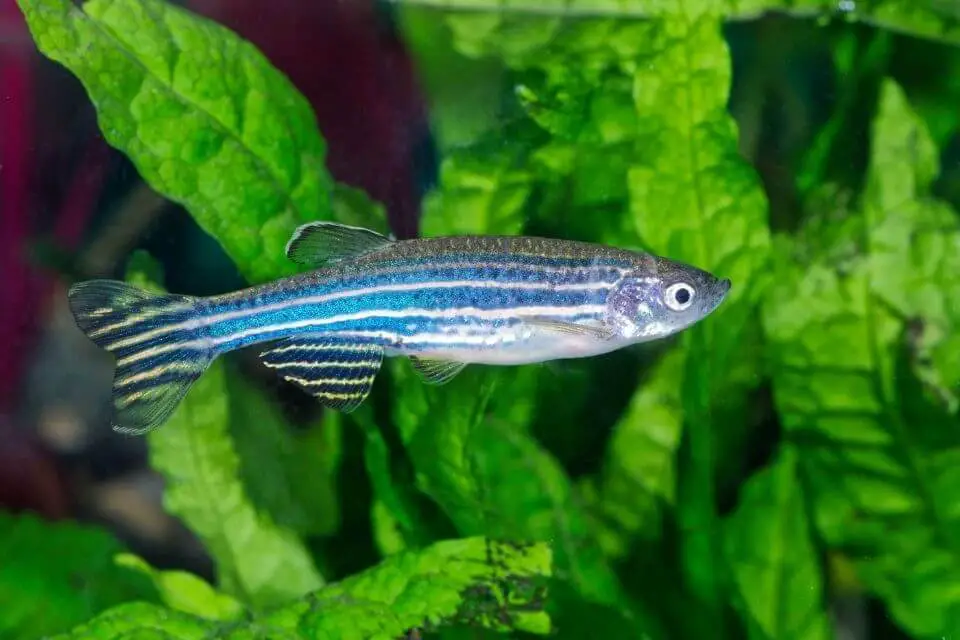
Zebra Danio Tank Mates
In the wild, Zebrafish are known to live along with species such as Honey Gourami, Indian Flying Barb, Emerald Pufferfish, and Scarlet Badis.
All these fish still make perfect Zebra Danio tank mates;
- Bengal Turquoise Danio
- Ember Tetra
- Celestial Pearl Danio
- Bronze Cory
- Dojo Loach
- Rummy Nose Tetra
- Honey Gourami
- Zebra Loach
Origin And Distribution
Originally, the Zebra Danios were believed to have originated from a significantly wide range that stretches from west Pakistan to Myanmar in East Pakistan.
However, current studies show that these fish originate from a narrow range, that is from some parts of Bangladesh and India.
The change in their distribution is a result of the identification of similar species that were initially misidentified as Zebra Danio.
In addition to that, the damage done to the environment has led to the reduction of areas habitable by Zebra Danio and has narrowed their natural range.
These fish utilize an array of habitats that range from slowing-moving streams to fast-moving and even stagnant ponds.
FAQs
How Many Zebra Danios Should Be Kept Together?
Zebra Danios should not be kept to less than five (5) individuals. It is known to induce stress when kept on their own, and they can become aggressive since they are shoaling fish. They are a social species, and they belong to shoals.
Are Zebra Danios Aggressive?
No. Zebra Danios are not aggressive; they are known to be playful, shoaling creatures as well as very social. However, aggressive nature is not unheard of when it comes to Zebra Danios.
When isolated or kept in relatively small numbers, they often tend to become very aggressive and attack other fish in the aquarium, particularly slow-moving ones.
Are Zebra Danios Fin Nippers?
Zebra Danios are very peaceful fish and often get along with several tankmates. However, they tend to nip the fins of some fish species, especially those with long fins like Bettas, Angelfish, and Guppies, which are a target of Zebra Danio.
How Do I Know If My Zebra Danios Are Stressed?
Identifying stress in Zebra Danio is relatively easy, and all that is required of you is to observe these signs in your fish;
- Loss of appetite.
- Infections.
- Swims strangely.
- Lethargic behavior
- Hiding.
- Change in color.
- Fast gill movement
- Loss of condition.
Why Are My Danios Swimming At The Top Of The Tank?
Danios are known to be surface-oriented; therefore, you should expect to see them swimming at the top of your tank more often. In fact, having tall plants at the top of your tank will help your danios feel more at home.
And as a result, they will be less stressed and display their best color giving your aquarium a top-notch decoration.
Where Is Zebra Danio For Sale?
Zebra Danios are available in all aquarium stores near you. You might as well order some from eCommerce websites that sell fish and fish foods.
These fish are highly available in the market and can be obtained with utmost ease. This is because they are relatively easy to breed and take care of in captivity.
How Much Does a Zebra Danio Cost?
Since they are highly available in the market, Zebra Danio is relatively affordable. For example, one Zebra Danio fish can go for approximately $15 to $25 in the USA aquarium market. You may have to pay for the shipping if you order them online.
Final Thoughts
After going through this guide, you can see that taking care of Zebra Danio is pretty straightforward, and anyone can achieve it. All that you require is to provide them with the utmost attention and have a top-notch tank setup.
By adhering to the tips discussed in this guide, your Zebrafish are destined to thrive significantly.
Furthermore, although they are susceptible to an array of illnesses, you can always protect them against such illnesses by providing them with nutritious meals and carrying out water changes in your aquarium more often.
Therefore, if you are on the lookout for the best fish for a newbie, you should consider going with Zebra Danio, and you will never regret making that move.


